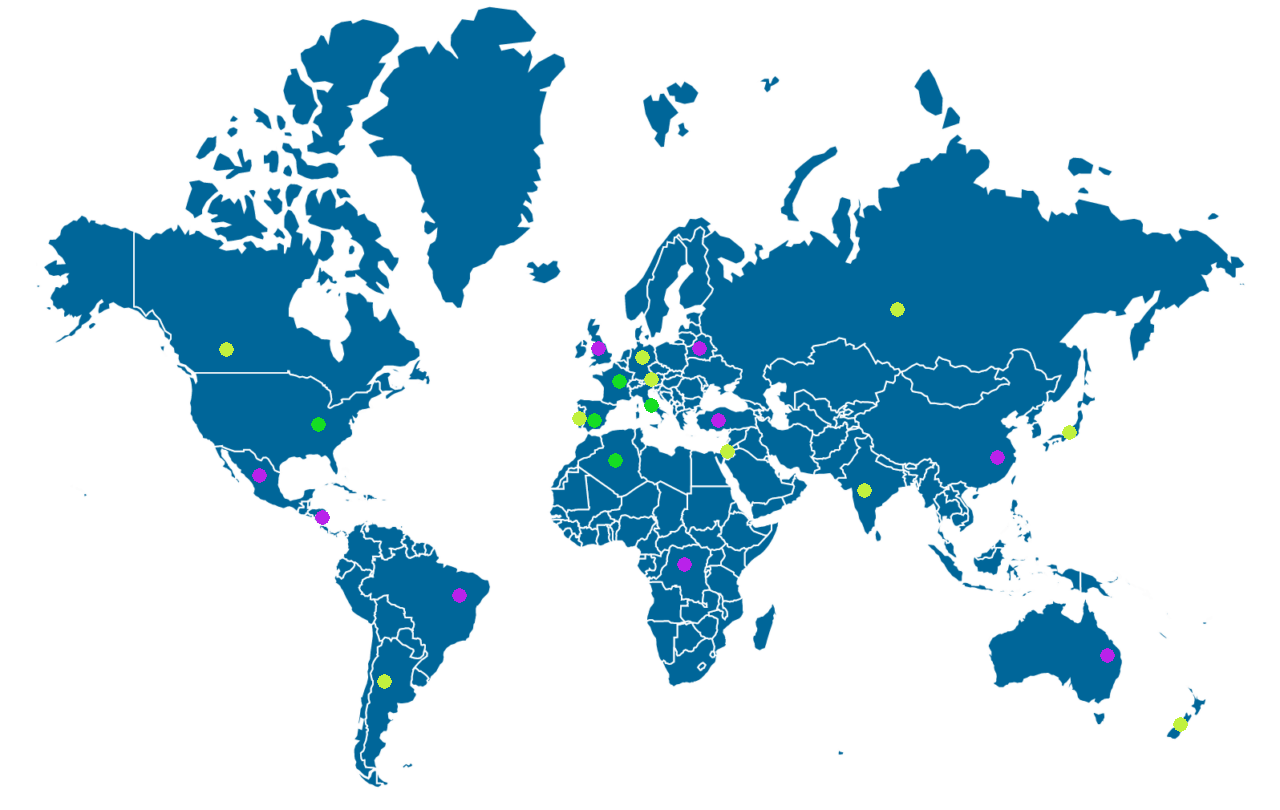Research updates
Online Grammars
Sign languages lack such a basic resource as comprehensive grammars. In this task, we have aimed at creating online reference grammars of 7 sign languages: Catalan, French, German, Italian, Spanish, Turkish Sign Languages and Sign Language of the Netherlands. Each grammar team has followed the structure of the SignGram Blueprint to ensure uniformity and comparability among the resulting grammars. The domains that we have covered are: i) the socio-historical background, ii) phonology, iii) lexicon, iv) morphology, v) syntax, and vi) pragmatics. The first version of the grammars has been written in English to make them accessible at international level. At a later stage, they will be translated into the local language to make them accessible to the local Deaf and hearing community.
In the first two years of the project, we focused on those topics for which linguistic descriptions were already available. On the basis of previous findings from the existing literature, we completed the first draft of these sections and collected the relevant visual examples. To work together in synergy and prevent possible inconsistencies within grammar and across grammars, we benefitted from both internal and external feedbacks. As for formatting and writing style, we defined common guidelines and conventions to follow. We have then provided new content for the remaining sections, incorporating both the results of new studies in the literature and original research.
Watch one of the videos that has included in the final grammar of Italian Sign Language (the sentence means ‘Earthquakes scare me’).
Atlas of sign languages
The aim of this task is to create an interactive online Atlas, which includes as many sign languages of the world as possible and represents their specific grammatical features. The basis of the Atlas is a compilation of language data, collected with an overall questionnaire. The final questionnaire contains (i) a glossary of terms in order to explain the concepts we use and (ii) the possibility to upload pictures and videos, in this way we are able to collect specific linguistic features and individual examples from sign languages worldwide.
The design of the questionnaire has been completed as well as the glossary of terms. Based on the SignGram Blueprint, we have defined more than 100 grammatical categories (on the level of phonology, lexicon, morphology, syntax, socio-history and pragmatics) for which we have elicited data of each sign language included in the Atlas.
We have pursued four objectives: (i) design the software tool for producing the comprehensive questionnaire with approximately 150 different questions for about 100 sign languages; (ii) programming and implementing a pilot of the online questionnaire; (iii) finalizing the set of questions for the final questionnaire based on the grammatical categories we defined; and (iv) compiling a list of potential content providers for as many sign languages as possible.

Assessment tools
The aim of this task is to build up assessment tools in sign language apt to assess the lexical and syntactic competence of signers and to allow for the diagnosis of linguistic deficits in special populations of signers, such as children with Specific Language Impairment, people with aphasia, and elderly people with a potential neurodegenerative disorder at early stages.
We have defined the form and structure of the assessment tests we have developed for Italian, French, Catalan, Spanish and Israeli Sign Languages. The battery of tests includes lexical tests to assess the capacity to comprehend and produce single signs, as well as syntactic tests to assess the mastery of syntactic constructions and rules. We designed the lexical tests by completing the selection of the items in sign language and the collection of the visual material (images and videos). We have worked on the validation of the lexical tests, an important phase needed to verify if the proposed tests are well formed and reliable. As for the syntactic tests, we conducted some pilot tests with Deaf consultants to improve the experimental design.
Look at the image below, showing the test editor interface while building a syntactic comprehension task. Participants are presented a video showing a sentence and a set of two pictures. They are then asked to select the corresponding picture.

Cultural heritage
The objective of this task is to create a digital archive of old signers’ linguistic and cultural heritage by recording, documenting and analyzing the historical memories and the linguistic uses of elderly Deaf people.
We have achieved the following:
- we completed the interview phase of ‘life stories of elderly Deaf signers’. A total of 137 interviews with 142 interviewees has been conducted in five countries (The Netherlands, Spain, Italy, Germany and Turkey). The interviewees range in age between 66 and 97 years.
- we digitized three existing films in France;
- we subtitled either fragments or entire interviews in the local spoken language in Germany, Italy, The Netherlands, Spain and Turkey;
- we subtitled four pre-existing narratives produced by Deaf elderly signers in Israel;
- we realized a documentary movie on Deaf elderly signers;
- we published an edited volume on Deaf elderly signers / Deaf history.
The interviews were conducted by Deaf research assistants, they followed a pre-established questionnaire, in order to ensure compatibility of content, but allowing for national adaptations.
The interviewees were happy to share their memories about joyful moments, school days, work-related matters, personal relationships, but also negative and confronting experiences of suppression and abuse.
Watch the promo of the interviews to the Italian old signers collected by the Italian team.
Stay tuned for more updates on our research results!
